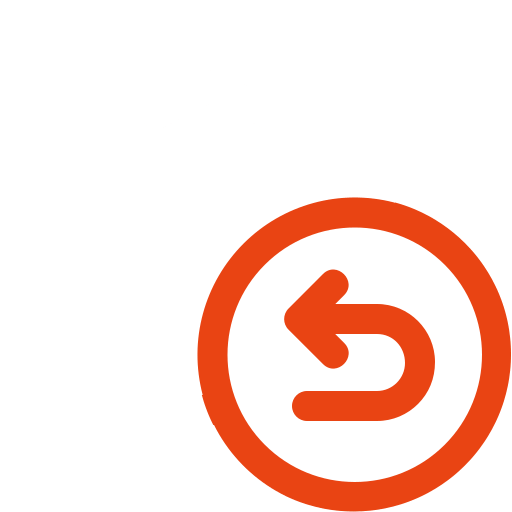Chilling down the open road, the freedom of riding a motorcycle is a next-level experience. But amidst the thrill of the ride lies a complex network of components working together effortlessly to power your machine. At the heart of this intricate system is a vital yet often overlooked part – the motorcycle stator. Serving as the lifeblood of your bike's electrical system, understanding this vital component is key to ensuring smooth rides and preventing unexpected breakdowns.
The motorcycle stator may not be as glamorous as sleek bodywork or roaring exhausts, but its role in keeping your bike running smoothly cannot be overstated. Responsible for generating electricity to power essential components such as lights and ignition systems and charging the battery, this unassuming piece plays a vital role in every aspect of your ride. Checking into the inner workings of the motorcycle stator reveals a world of electromagnetism and precise engineering that forms the backbone of reliable and efficient electrical performance on two wheels.
What is a stator
Is your motorcycle refusing to start? Are you experiencing electrical issues that leave you stranded on the side of the road? Relax! Here is the solution to understand your complex problem.
One potential culprit might be a faulty stator. The stator is a critical component of your motorcycle's electrical system, responsible for generating the electrical power needed to keep your bike running smoothly.
Located within the engine casing, the stator consists of wire coils wound around an iron core. When the engine is started, it drains the battery by taking power from the battery. Once the bike is started and running smoothly, the stator produces alternating current (AC) electricity. This AC electricity is then converted to direct current (DC) by the motorcycle's rectifier/regulator. This current is used to charge the battery and power the motorcycle's electrical components.

In essence, the stator serves as the heart of your motorcycle's electrical system, ensuring that power is supplied to essential components like the ignition system, lights, and accessories. So, if you're experiencing issues with starting your bike or if your electrical system seems to be malfunctioning, it's worth checking the condition of your stator.
Regular maintenance and prompt attention to any signs of stator failure can help ensure the smooth and reliable operation of your motorcycle.
How Stators Work
Stators' work is based on the principles of electromagnetic induction, a fundamental concept in physics discovered by Michael Faraday in the 19th century. This process explains how electricity can be generated by moving a conductor through a magnetic field or by changing the magnetic field around a conductor.
The history of motorcycle stators begins with magneto ignition systems in the late 19th century. Advancements led to the adoption of stator-based charging systems, which, in the 20th century, evolved to compact and efficient designs over time. Integration of electronics enhanced performance and efficiency, with a focus on fuel economy and environmental impact. Future trends may see further optimization for electric motorcycles and continued improvements in efficiency and reliability.
Here's a breakdown of how stators generate electricity:
Magnetic Field:
Stators contain a stationary set of coils wound around an iron core. When current flows through these coils, they generate a magnetic field around them. This magnetic field remains stationary due to the fixed position of the stator within the motorcycle's engine.
Rotor Movement:
Inside the motorcycle's engine, there is a rotating component called the rotor or flywheel. The rotor is typically mounted on the crankshaft and spins as the engine operates.

Changing Magnetic Field:
As the rotor rotates, it passes by the stator coils, causing the magnetic field around the coils to change. This change in magnetic flux induces an electric current in the coils of the stator according to Faraday's law of electromagnetic induction.
AC Voltage Generation:
The induced current in the stator coils alternates in direction as the rotor spins, resulting in an alternating current (AC) output from the stator.
This AC voltage is then sent to the regulator-rectifier, which converts it into direct current (DC) suitable for charging the motorcycle's battery and powering the electrical systems.
Regulation and Rectification:
The regulator-rectifier regulates the voltage output from the stator to ensure that it remains within safe limits for the battery and electrical components. It also rectifies the AC voltage into DC voltage, which is necessary for the battery to charge properly and for the electrical systems to operate efficiently.
Stators generate electricity through electromagnetic induction by utilizing the interaction between a stationary magnetic field produced by coils in the stator and a rotating magnetic field produced by the rotor. This process produces alternating current (AC) voltage, which is then regulated and rectified to provide the necessary power for the motorcycle's electrical system.
Stator failure symptoms
Recognizing the symptoms of stator failure is crucial for timely diagnosis and maintenance to prevent unexpected breakdowns. Giacomo Agostini, a famous motorcycle racer, once faced this issue. Let me quote the whole scenario. After so many years of smooth running and a total of 34k+ km, his bike had this issue.
As he started searching, he found this was a very common issue with this model, and the issue was with the start motor (located on the right side, under the front seat, beside the battery, has the shape of a cylindrical body). Then, he went to the shop and got the self-start motor part replaced with a new one.
Here are some common signs indicating a stator might be failing:
Electrical Issues:
- Dim or flickering headlights, dashboard lights, or turn signals.
- Inconsistent or erratic operation of electrical components such as the horn, indicators, or fuel gauge.
- Difficulty starting the motorcycle, particularly when the battery is fully charged.
Charging System Problems:
- The battery is not charging properly, leading to frequent battery drain or a dead battery.
- The motorcycle stalls or loses power while riding, especially at higher speeds or under heavy electrical load.
Engine Performance:
- Rough idling or difficulty maintaining a steady idle speed.
- Misfiring or hesitation during acceleration, particularly at low RPMs.
- The engine is running excessively hot, indicating inadequate cooling due to insufficient electrical power for the cooling fan.
Unusual Noises:
- A high-pitched whining or buzzing sound comes from the engine or alternator area.
- Grinding or rattling noises may indicate internal damage to the stator or associated components.
Burnt Smell or Smoke:
- The smell of burning insulation or electrical components, often accompanied by smoke emanating from the engine or electrical system.
- This indicates overheating or short-circuiting within the stator windings, which can lead to irreversible damage if not addressed promptly.
Visible Damage:
- Physical damage to the stator housing or wiring, such as cracks, corrosion, or exposed wires.
- Oil leakage around the stator housing indicates a potential seal or gasket failure that can lead to contamination and damage to the stator windings.
If you notice any of these symptoms, you must have your motorcycle inspected by a qualified mechanic or technician to diagnose the issue accurately. Ignoring signs of stator failure can lead to further damage to the electrical system and potentially leave you stranded on the roadside.
Prompt maintenance and replacement of a faulty stator can help ensure the reliability and longevity of your motorcycle's electrical system.
Maintenance and Troubleshooting
Maintaining a healthy stator is vital for ensuring reliable performance and avoiding unexpected electrical problems on your motorcycle. Here are some tips on maintenance and troubleshooting to keep your stator in top condition:

Maintenance Tips:
The following tips are proven to work for all types of maintenance. Consistency is key when it comes to maintenance. By regularly following these tips, you may cross the river of flaws and errors:
Regular Inspection:
Periodically inspect the stator and associated wiring for signs of damage, corrosion, or oil leakage.
Check for loose connections or frayed wires and repair or replace them as needed to prevent electrical faults.
Proper Cooling:
Ensure adequate airflow to the stator to prevent overheating, especially during extended periods of riding or in hot weather conditions.
Check the condition of the cooling fan and ensure it is functioning correctly to maintain optimal operating temperatures.
Battery Maintenance:
Maintain the battery in good condition by regularly checking its electrolyte levels (if applicable) and charging status.
A healthy battery reduces the load on the stator and helps prolong its lifespan.
Troubleshooting Tips:
Here are some working and proven troubleshooting tips that will work for anyone:
Check Electrical Connections:
Inspect all electrical connections, including those between the stator, rectifier/regulator, battery, and other electrical components.
Ensure connections are clean, tight, and free from corrosion or damage.
Test Charging System:
Use a multimeter to test the output voltage of the stator while the engine is running at various RPMs.
Compare the measured voltage to the manufacturer's specifications to determine if the stator is generating sufficient electrical power.
Diagnose Electrical Issues:
If you experience electrical problems such as dim lights, battery drain, or difficulty starting the motorcycle, systematically troubleshoot the electrical system.
Check the battery voltage, inspect fuses and relays, and test the output voltage of the stator and rectifier/regulator to pinpoint the source of the issue.
By following these maintenances and troubleshooting tips, you can ensure that your motorcycle's stator remains in optimal condition, providing reliable electrical power for years to come. Regular inspection, cleanliness, proper cooling, and proactive troubleshooting are key to maintaining a healthy stator and avoiding unexpected electrical problems on your motorcycle.
Conclusion
The motorcycle stator plays an important role in the functioning of your bike's electrical system. It converts mechanical energy into electrical energy, providing power to the various components of the bike. By understanding its function and importance, riders can better troubleshoot any issues and maintain their stator for optimal performance.
Remember to regularly check and maintain your stator to ensure the smooth operation of your motorcycle. With proper care and knowledge, your bike's electrical system can continue to power you on your journeys for years to come.
FAQ
What does a stator do on a motorcycle?
A stator on a motorcycle is a stationary electrical component that is part of the ignition system. It generates electricity using an alternating current (AC) and helps to power the bike's electric start system and other electrical components.
How do I know if my motorcycle stator is bad?
A stator on a motorcycle is a stationary electrical component that is part of the ignition system. It generates electricity using an alternating current (AC) and helps to power the bike's electric start system and other electrical components.
To determine if a motorcycle stator is bad, one can identify symptoms such as difficulty starting the bike, dimming or flickering lights, and a lack of power in the electrical system.
What happens when the stator goes out?
A stator on a motorcycle is an essential component that generates a power source for the electric start system and other electrical components. It helps to ensure proper ignition and functioning of the motorcycle.
If the stator goes out, it can lead to difficulty in starting the bike, flickering or dimming lights, and a reduced power output in the electrical system, which requires repairs or replacement.











